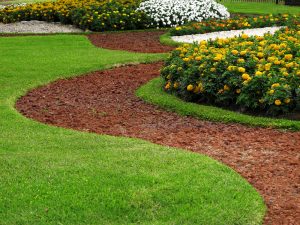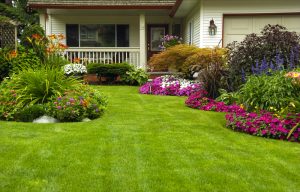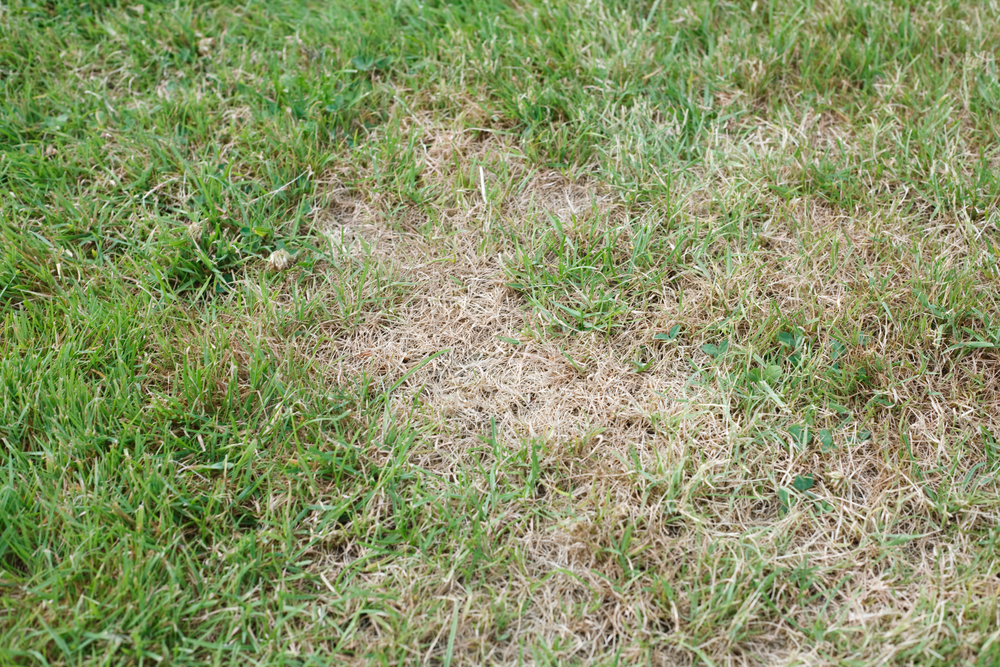Here in New Jersey, nothing is more critical to maintaining a healthy lawn, year-round, than regularly scheduled maintenance and lawn care. Especially vital is dealing with the many common lawn diseases that are found throughout the state. This is, perhaps, best provided through the services of a lawn service professional. Their expertise with lawn diseases common to New Jersey lawns allows for preventative treatments and successful remedies should a lawn disease take root in your yard.
 Lawn disease is the result of an invasion of your soil and grass by various types of fungus that, once discovered, can multiply and spread, assisted by moisture, temperature, and sunlight. Once ensconced in your lawn these fungi are capable of destroying your yard in a very short period.
Lawn disease is the result of an invasion of your soil and grass by various types of fungus that, once discovered, can multiply and spread, assisted by moisture, temperature, and sunlight. Once ensconced in your lawn these fungi are capable of destroying your yard in a very short period.
Lawn Diseases Common to New Jersey
While the sheer number of lawn diseases that are found in the state may seem daunting, even more, stressful to consider is the types of grasses that are susceptible to them along with the seasons in which they are most prevalent. This is all the more reason to entrust the care and protection of your lawn from disease to a lawn service professional with a long and commendable history and reputation. Following are some of the most pervasive and potentially devastating diseases your New Jersey lawn may be susceptible to contracting.
- Dollar Spot
If your lawn is comprised of bent grass and Kentucky bluegrass, be on the lookout for signs of dollar spot, especially during summer, or periods when drought is prevalent. Dollar spot may also surface if your soil is low in nitrogen content. It manifests as brown, grey or straw-colored spots that resemble a silver dollar. It can spread rapidly so urgent attention to it is recommended.
- Leaf Spot
If you notice lesions that are brown or purplish on your grass blades, you are probably facing an invasion of leaf spot. It can occur in conditions where thatch has been allowed to build up, or from excessive nitrogen in the soil. Immediate attention is required as your grass blades may begin to die suddenly at a rapid pace.
- Brown Patch
This fungus can invade almost any of the varieties of grass common to a well maintained New Jersey lawn. Look for it to appear first in shaded areas when humidity is especially high. Brown patch gets its name from the brown-colored and mostly circular patches surrounding otherwise healthy portions of lawn once the infestation has begun.
- Snow mold
If your lawn is fine or tall fescue or Kentucky bluegrass, and winter conditions have seen an abundance of cold temperatures, ice, and snow, be on the lookout for snow mold. It typically appears on lawns that have had standing snow on top of it for long periods of time.
- Red Thread
Wet grass blades, especially when they are perennial rye, fescue or Kentucky bluegrass, that take on the appearance of having reddish colored threads forming on them, means your lawn has red thread disease. During periods of weather, when it is cool and moist, the red thread can grow rapidly until it begins to turn brown and then dies.
- Fairy Ring
During spring and fall, fairy ring can appear on your lawn as circular rings that are bright green. All types of grass common to New Jersey are candidates for contracting fairy ring. It can grow at an alarming rate, up to 50 feet or more across. The grass adjacent to the ring will eventually turn brown. This area is known to produce an abundant growth of mushrooms.
- Fusarium Blight
During late winter into early spring, be on the lookout for symptoms of fusarium blight, which is also known as summer blight. It will manifest as green circular patches of a lightish hue that are three inches in diameter. They will turn to a reddish brown color before they eventually die. One sure sign that fusarium blight may be active is if your grass is covered by a white or light pinkish mold right after snow melts.
- Pythium Blight
This is a common and serious problem with New Jersey lawns. Newly seeded lawns are highly susceptible to this fungi during spring and fall. Patches that appear as water soaked and blackened may grow rapidly and in abundance. This will kill your grass, usually in less than 24 hours. New grass blades from your lawn will not grow back in these affected areas.
- Grease Spot
If your lawn begins to show signs of streaks across the yard that look like grease spots, you need to have it treated as soon as possible. The patches this fungus produces are slimy looking, brown in color, and often produce a visible, cotton looking fungus. Grease spot thrives during wet periods or times when the humidity is excessively high.
Prevention and Treatment
If your lawn is a source of pride for you, and if you have invested time and money into its appearance, the last thing you’ll want to face is a lawn disease such as those described above. They can devastate your lawn and should be responded to with treatment immediately upon discovery. Your best line of defense is going to be found in working with a lawn service professional. Contracting for regularly scheduled lawn maintenance is the single best thing you can do to avoid the devastation that is possible, if and when a lawn disease invades your lawn.
For well over three decades Chris James Landscaping has been helping New Jersey residents and businesses to combat the potential ravages of lawn disease successfully. If you suspect your lawn has contracted a disease, don’t hesitate to contact them for immediate treatment. Better yet, call them today to arrange for them to set you up with a regular maintenance schedule, so the likelihood of a lawn disease impacting your lawn is significantly reduced.
Thank you for reading our blog! How can we help you? Contact us today.



